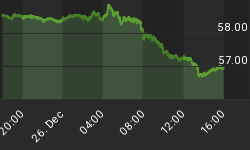Iran’s economy contracted by 4.9 percent in the 2018-2019 year ended in March, slipping further into recession as diminishing oil exports due to the U.S. sanctions are depriving the Islamic Republic of its economic lifeline—oil revenues.
The 4.9-percent contraction between March 2018 and March 2019, reported by the Statistical Center of Iran cited by VOA, could worsen even further as the U.S. removed all sanction waivers for Iranian oil buyers as of May 2.
After the U.S. ended all sanction waivers for Iran’s oil customers on May 2, Iran’s crude oil exports dropped significantly in May this year compared to April and plunged by more than 2 million bpd off their 2.5-million-bpd peak in April 2018, just before the U.S. withdrew from the Iran nuclear deal and moved to re-impose sanctions on Iran’s oil industry.
Iran is considering revising its financial and budgetary policies to remove oil income from them as a means to “counter Washington’s economic sanctions that constitute a case of terrorism,” Iran’s Foreign Minister Mohammad Javad Zarif said last week.
Oil income is an essential part of Iran’s state revenues and the plunging crude exports are crippling the economy.
According to the International Monetary Fund (IMF), Iran’s economy is expected to shrink by 6 percent this year, while the annual inflation will spike to 37.2 percent. Related: Beijing Backlash: Stocks Slammed, Gold Boosted
A World Bank report from earlier this month showed that Iran’s annual inflation had risen sharply from about 10 percent in the middle of 2018 to about 52 percent in April 2019, “contributed by a depreciation of the rial in the parallel market of more than two-fold compared to levels prior to the announcement of U.S. sanctions in April 2018.”
The World Bank sees Iran’s gross domestic product (GDP) dropping by 4.5 percent this year after an estimated fall of 1.9 percent in 2018.
By Tsvetana Paraskova for Oilprice.com
More Top Reads From Safehaven.com:

















